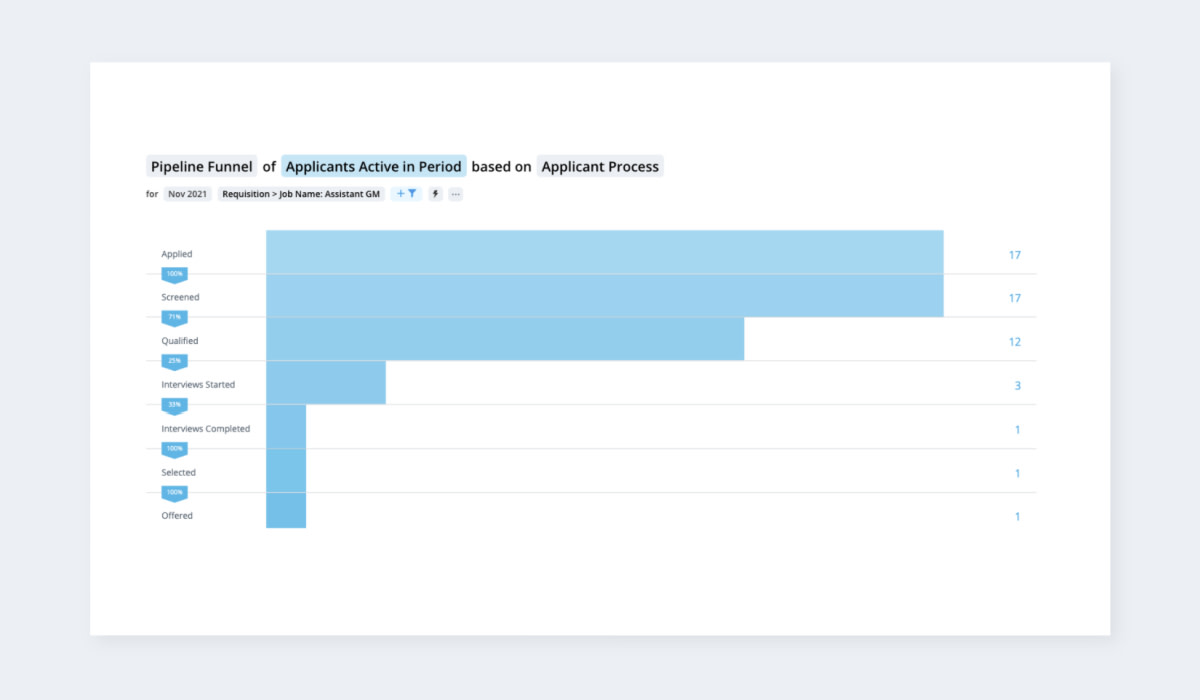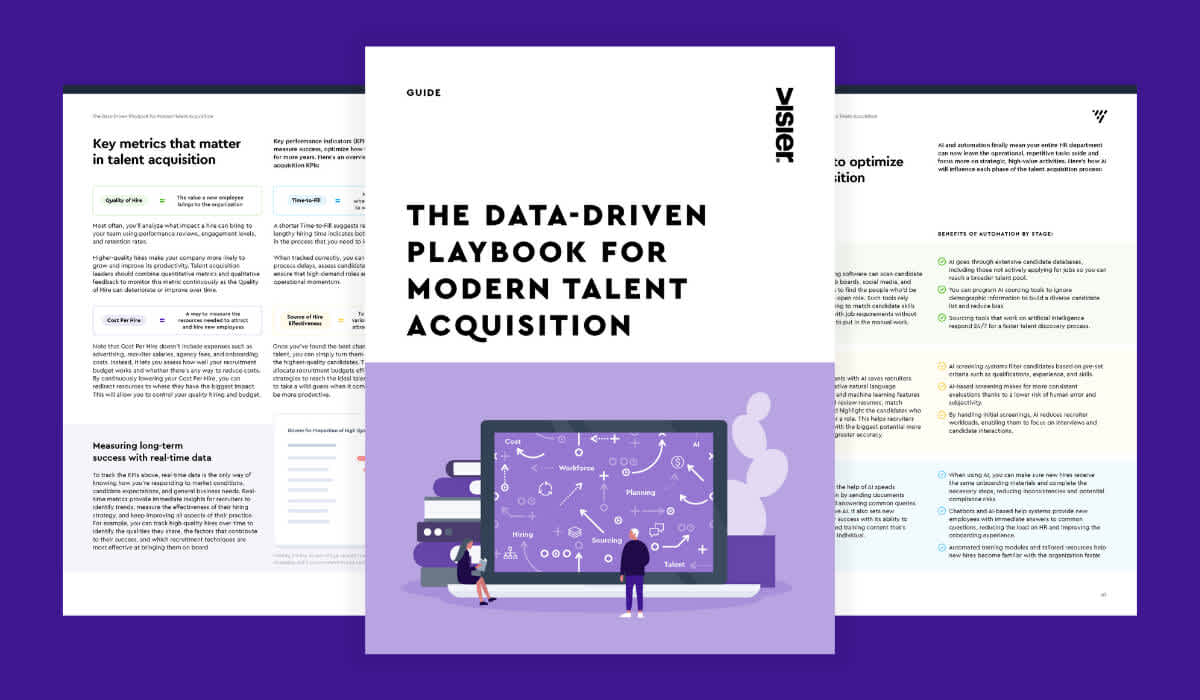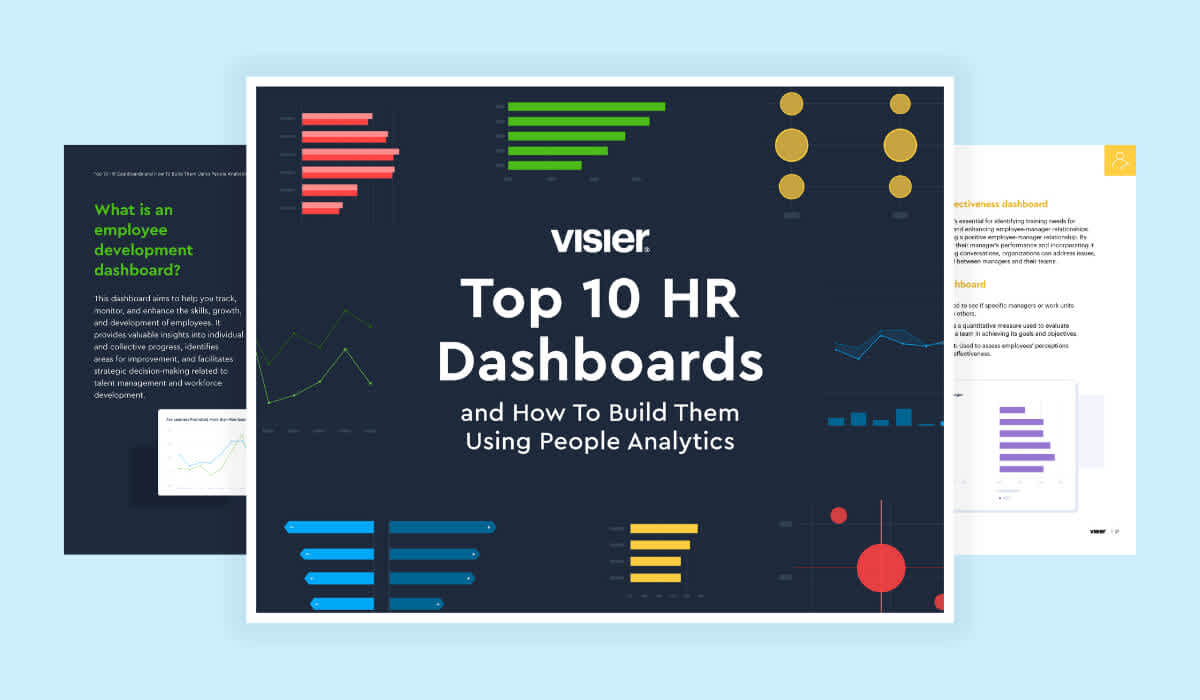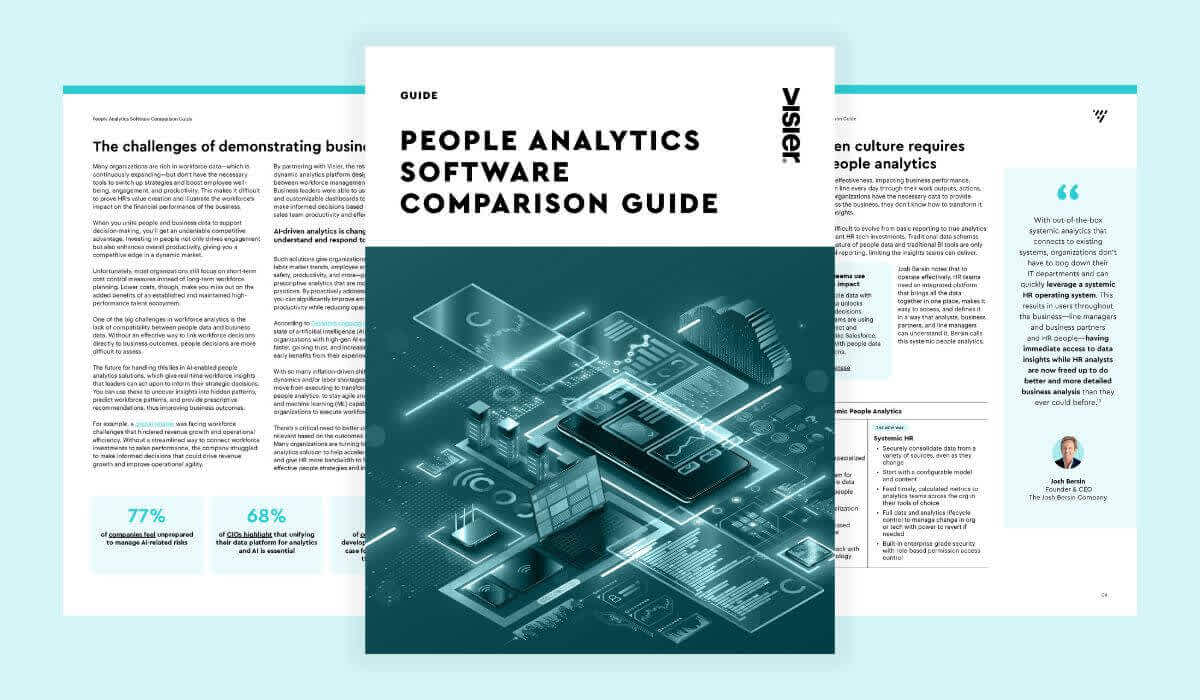Ask Visier: Are hiring resources being wasted?
What’s the best way to optimize talent acquisition? A people analytics expert explains how to use data analytics in recruitment to hire smarter.

How much are you spending on talent acquisition? Are your hiring resources being wasted? Do you have the right recruitment analytics tools to optimize talent acquisition? Earlier in my career, while a senior individual contributor, I was granted the opportunity to hire an assistant. I provided our recruiting team a very broad, nearly generic list of requirements, and we received over 300 applications. Each of them met the broad list of requirements I had provided, and I ended up going through 300 applications and conducted over 125 phone interviews before I found the best candidate.

This was obviously an enormous consumption of my time and frustrated my supervisor and customers as delivery of projects suffered as a result. However, this candidate turned out to be a “purple squirrel,” a term recruiters use to describe “the perfect candidate.” The end result was good, but it could have been done more efficiently.
Why should leaders know if hiring resources are being wasted?
As with any process, optimization in talent acquisition is crucial. By ensuring the right number of quality candidates, hiring managers maximize their time interviewing qualified candidates.
Eighteen months after my experience hiring my assistant, I was granted an opportunity to hire an additional assistant. Knowing how much extra effort my first search had cost the team made me rethink my approach to the second search. This time, I had a specific list of knowledge, skills, and abilities (KSAs) that were “must have” as well as a list of “nice to have.” This list was so specific that I ended up with only four applications that met the criteria. I was able to hire someone just as promising as my first assistant, my second “purple squirrel.”
What can people data reveal about talent acquisition resources?
Narrowing down the list of potential candidates saves hiring resources. The ratio of candidates provided to the hiring manager to those interviewed should ideally be in the range of 1:1 (fully optimized, only one person has all the requirements) to 4:1 or 5:1 (somewhat optimized, there are four or five people who meet the requirements). Anything greater than 5:1 is typically a waste of the hiring manager’s time.

This chart shows the pipeline funnel of applicants in the hiring process
How do you optimize the candidate vetting process?
When writing the requisition, the list of KSAs required for the position should be specific enough (Yes/No) so that recruiters who may not be intimately familiar with a particular KSA can easily “check off” whether a candidate has the requisite KSA. This is yet another way in which having the right data in the right hands can save time.
A hiring manager’s time is precious, and an optimized candidate vetting process is one step in maximizing time for the hiring manager. Simplifying the vetting process by providing a specific list of clear knowledge, skills, and abilities required will mean the hiring manager only needs to schedule a select few interviews rather than dozens.
How does Visier help talent acquisition teams make the most of their hiring resources?
Visier can tell HR teams the number of applicants that make it through each of the pipeline funnels. The Visier platform easily shows this data for the individual job as well as at rolled-up aggregate levels (for example, job family or at recruiter levels). Using this data, you can easily calculate the ratio of qualified applicants to interview to positions open. (in our example here it is 3:1).
As organizations rush to fill labor gaps, demand for an efficient talent management process is up, and hiring teams will have an increased workload. Companies that can optimize their recruiting resources will have an advantage competing for talent in 2022. Having the tools, such as Visier, to create an effective talent management solution is the path to hiring smarter.

Learn more about talent acquisition resources
These are the top 10 strategic talent acquisition metrics that have the highest chance of getting your CEO’s attention.
What's next for talent acquisition, upskilling, and internal mobility? Watch the latest Totally Rewarding Chats series to find out!
How can you use engagement and performance data in talent acquisition? Discover four steps to data-driven employee retention here.


